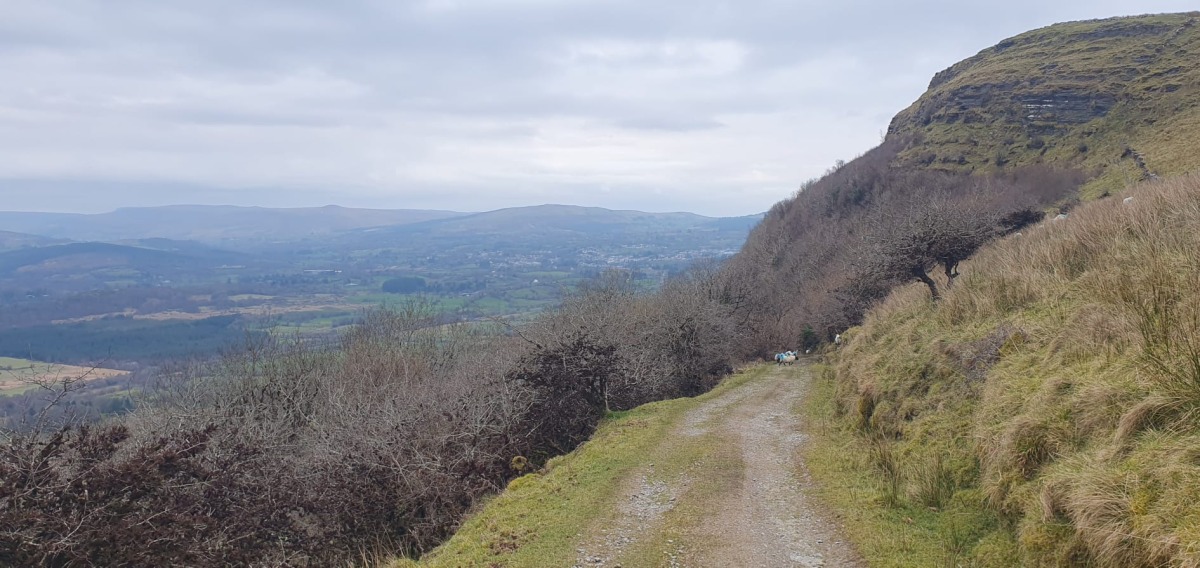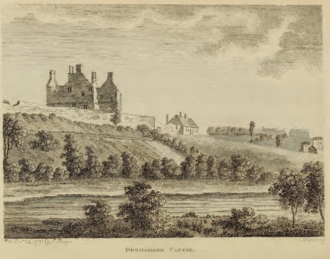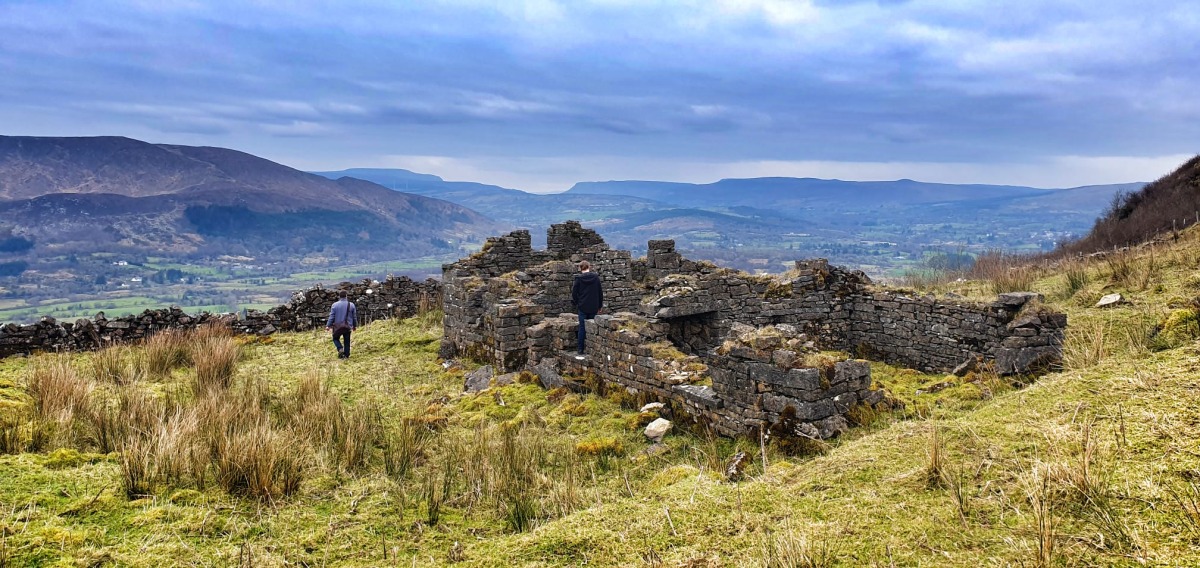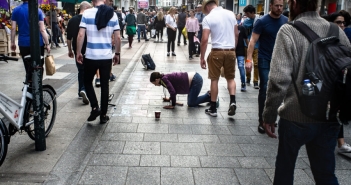In a recent article Frank Armstrong traces the historic decline in the population of Leitrim, triggered by the Famine of the mid-19th century. He notes that Leitrim County Council’s recent attempts to encourage people to buy and rehabilitate derelict cottages has been disappointing.
This analysis is based on cogent statistical analysis. ESRI analysts have reached similar conclusions. As somebody who first became acquainted with Leitrim and the North-West of Ireland in the early 1980s – I went on to purchase a house through a non-profit housing organisation in the mid-1980s – I would have agreed with the glass-half-empty-pessimism.
Decades later, however, as an inside-outsider with a physical stake in the county, I would argue that the historic decline has shifted and if only government and non-state actors can push the pull the right levers I am optimistic about the future.
My childhood was spent in a Kildare village near the Curragh. After five years studying in Dublin I spent almost three-and-a-half years teaching English and promoting school agriculture in a remote boarding school in Zambia. After further book-learning I returned to a town school in Zambia and again promoted school food production in addition to my English language teaching duties.
I grabbed an opportunity to leave the urban bubble of Dublin early in 1981 and took up a development education post based in Sligo. Much of my emphasis was on cultural education, using slides and attractive artifacts, touring schools and a few Irish Country Women’s groups in counties Sligo, Leitrim, Donegal and north Mayo.
I spent six years until 1987 travelling around in a second-hand Renault van – the model then driven by An Post mail delivery personnel – organising hotel and community hall exhibitions in Sligo, Letterkenny and Ballina on development challenges in the Third World.
Frank Armstrong calls on Government to act decisively and imaginatively to allow more people to live in rural Ireland as a way of addressing the housing crisis.https://t.co/GL0xbRQXlV@RoryHearneGaffs @LornaBogue @LeitrimLive @lorcansirr @beny987 @PeterDooleyDUB @paddycosgrave
— CassandraVoices (@VoicesCassandra) February 10, 2023
Deserted Villages
Enough about me. The visual and socio-emotional feel West of the Shannon was different from what I was accustomed to in Leinster.
The rural hinterland, small villages and stagnating towns, had Third World characteristics, minus famine and ethnic wars. On crooked country boreens I came across ‘deserted villages’ with derelict schools and abandoned cottages.
Oliver Goldsmith’s long poem The Deserted Village about Sweet Auburn came to mind. I thought parts of the North-West could figuratively be termed “a Sahel with rain”. Figurative language is colourful but has its limitations.
At the same time, however, I saw positive attempts by blow-ins (incomers) from other parts of Ireland, the UK, Germany, the Netherlands, France – even a few from Italy – to restore dilapidated cottages with a few acres around them.
Such in-comers had begun arrived in dribs and drabs from the 1970s. They cleared scrub and stones from small plots of land, brought in topsoil and grew unusual vegetables in things called polytunnels.
Indigenous locals knew the “pollies” were different from friable glass houses that the gentry in Big Houses used in walled gardens. Sceptical locals also thought that reconditioning the soil for vegetable tunnels and trying to make ends meet by keeping she-goats for milk and cheese was a hopeless enterprise.
They were right. Some in-comers worked their guts out, became ill in mind and body and returned to their urban societies.
I tried to paint a broad picture of this, the North-West, the West and the South-West mostly, in a 2007 article published in a fringe pacifist magazine edited by a friend in Belfast. Read it see what you think. Link: Blow-in rural settlers made an impact in Ireland (innatenonviolence.org).
The land question has haunted Irish politics since time immemorial. Frank Armstrong attributes the current acute housing crisis to the colonial settlement.https://t.co/7Qp4K5wQrr@broadsheet_ie @BowesChay @vincentbrowne @connolly16frank @caulmick @RoryHearne @fallon_donal
— CassandraVoices (@VoicesCassandra) August 17, 2021
Relative Affluence
Relative affluence came to Leitrim and nearby counties when Ireland became awash with EU money and foreign direct investment, systematically enabled by the Industrial Development Authority (IDA).
We were told that the housing boom of the 1990s until the financial meltdown of September 2008 filled the coffers of county councils and gave local employment. Polish and other immigrant workers aided the indigenous workforce. The intelligent Poles remitted money; some repatriated savings for business start-ups; a few married Irish locals – beneficial to both societies.
I know of country folk who never caught sight of the money sloshing about in ‘the economy’ of the Celtic Tiger era. They lived frugally to the end of their days. Then dispersed relatives either left the ancestral cottage to rot or sold it off to divide the money.
An originally German real estate agency, Schiller & Schiller, sold lots of derelict cottages in Leitrim and Sligo. Dublin-based Sherry FitzGerald did its business. Leitrim and Sligo agencies sold many places. Sites near towns and important roads sold well. Off-road properties in the back of beyond were left to dereliction.
Urban statistical numbers crunchers don’t realize that North Leitrim (from Ballinamore to Kinlough and Kiltyclogher) differs in developmental growth from South Leitrim.
The county town of Carrick-on-the-Shannon is ideally situated on the Shannon with its cabin cruiser tourism. The Sligo to Dublin railway line and the frequent bus services are an added boon. Dromod, Jamestown and Rooskey have also experienced increases in population along with opportunities in the food and hospitality sector. Rooskey alas witnessed recent hostility to an empty hotel being made ready for refugee and asylum seekers. There was mysterious arson, possibly with involvement by outside racists.
After resigning his Dublin practice and moving on to a new life in county Leitrim, Marcus de Brun learns the NCT is just “a multi-million money making racket”.https://t.co/y1zF7UAuJJ@indepdubnrth @BowesChay @paddycosgrave @danieleidiniph1 @BenPantrey @BillyRalph #NCT #Leitrim
— CassandraVoices (@VoicesCassandra) March 6, 2023
Kurds
Carrick-on-Shannon was the major hub of Leitrim’s housing boom. Before the bust government agencies leased new houses to settle Kurdish refugees from Iraq and nearby danger zones. Asylum seekers from Africa and elsewhere also arrived in the town. Some Kurdish families settled into a low income working class estate where I saw children happily running around with Irish peers.
We may assume they went through the local schooling system and acquired local accents. In downtown Carrick a Kurdish shop selling foodstuffs of oriental and Middle Eastern provenance opened and did good business until Covid restrictions.
Meanwhile asylum seekers, who later took out Irish nationality and became members of the New Irish, sought group cohesion through Sunday services with a London-linked African apostolic faith group, held in a hired hotel room. African Baptists and independents found fellowship with relevant communities around town. Catholics blended into schools and parish life – along with believing Polish residents.
Drumshanbo, linked by canal to the nearby Shannon, is half an hour’s drive north of Carrick. It was the site for Lairds Jams factory. The factory is long closed, but during the recent past has been regenerated as an industrial park.
Whiskey and gin distilling are among new enterprises. Gunpowder gin has become a famous export. Has it arrived in Hong Kong to take its place on supermarket shelves beside the local Gunpowder Tea I wonder?
Drumshanbo is the only town that continues to stage an An Tostal (“Ireland at Home”) festival – now named after Councillor Joe Mooney who promoted it – which governments during the depressed years of 1953-54 encouraged to drum up (excuse the pun) flagging national morale.
The town holds another festival featuring delightful temporary sculptures made from hay and silage bales. Drumshanbo is on the way up because it has a self-confident community spirit and entrepreneurs making deft use of government-assisted inducement grants.

Image: Morgan Bolger
Northern Stasis
By contrast, North Leitrim has seemed to languish in a glass half-empty stasis. Manorhamilton is the main town. Its name derives from Hamilton’s Castle built during the period of the Cromwellian conquest. Originally it was known as Cluainín Ui Ruaric – O’Rourke’s Meadows.
This Gaelic chieftain was executed at the Tower of London for failing to submit to the colonial authority of Elizabeth I. Manorhamilton became a run-down town especially after the privately owned The Sligo, Leitrim and Northern Counties Railway (SL&NCR) railway line that operated between Enniskillen and Sligo closed down in October 1957. This and containerization radically affected the cattle trade. Old family run shops closed. The main street today has numerous boarded up shops, while the old Central Hotel is no longer in operation.
But in the wake of Covid, Manorhamilton is slowly clawing its way back. A few factories established with IDA grants have offered job opportunities.
A number of strongly motivated entrepreneurs have sunk big bucks into developing off a side street what is called the W8 Centre. Modern buildings with a good restaurant on ground floor and self-catering apartments on the top floors have been designed to attract holiday makers from Dublin and beyond.
Moreover, local history and heritage activists are pushing for Manorhamilton, with old buildings and historic political associations, to be declared a National Heritage Town.
The town also has the Leitrim Sculpture Centre. A few people from Dublin and England who did ten-month sculpture courses – previously financed by FĀS – fell in love with the area and settled into renovated cottages.
Today the Centre has residencies for emerging sculptors and they add to the lake and woodland landscape with site-appropriate sculpture trails. The Glens Centre caters for visual arts and drama in an old Methodist Church that was replaced due to a diminishing congregation by a smaller church nearby.
One sporting innovation is the revival of handball, with encouragement and training of local girls and boys, using a reconditioned handball alley that fell into neglect a few decades ago.

Dromahair Castle, 1791.
Dromahair
The village of Dromahair, with close job links to nearby Sligo town, grew considerably during the housing boom. Sadly, one still sees some houses that weren’t completed before the 2008 bust that vacant.
It seems the Council is powerless to do anything. Would a constitutional amendment to Article 15 on property rights give local authorities effective powers to sort out the empty property syndrome?
Dromahair has benefited from the practical talents of several incomers. One German national who restored old cottages in the area set up a successful candle making enterprise. Read here my interview with him: Pete Kern – Craft candle maker – BeesWax Candles Ireland
In 2017 Rosemary Kerrigan and some other local like-minded colleagues were pleased to dress up in period costume and witness the official opening opposite the old railway station of a 1.2km demonstration Greenway on the old line that connected the village with other places.
The Big Dream, of Kerrigan and the small group who labored to create the demonstration is that state backing will soon enable governments in Dublin and Belfast to develop a cross-border Greenway for cyclists and walkers linking Sligo, Collooney, Ballintogher, Dromahair, Manorhamilton, Glenfarne, Blacklion, Belcoo and Enniskillen.
This Greenway will invite domestic and foreign tourists to savour the scenic and cultural joys of Sligo, Leitrim, Cavan and Fermanagh. The demonstration stretch, bordered by trees and hedges protecting a SAC, has convinced British, Irish and EU dispensing inter-regional and peace funding to act. Monies have been voted and statutory consultations are taking place before work commences.
- Image: Morgan Bolger
- Image: Morgan Bolger
Local Campaigns
North Leitrim’s potential is thwarted by bureaucratic and material blockages. Decisions made and policies pursued by officialdom and companies have aroused suspicion and dismay.
Protest groups have responded to some unwelcome phenomena. Take the decision to allow private companies to prospect for gold on Leitrim hills and along river concourses.
Treasure Leitrim holds area meetings, distributes information brochures with maps and warns of what gold mining has done in other countries. Love Leitrim is an active anti-fracking campaign group.
Another concern is about the visual and health impact of hillside electricity generation clusters. Some windmillification has occurred, often by stealth, taking residents by surprise. Windmills emit a ‘white noise’ that campaigners say badly affects hearing and sleeping patterns.
Yet another concern is about the tree planting policies of Coillte and its links with foreign investors. The curse of sitka spruce tree planting and short-term harvesting, leading to soil acidification, is decried.
Ecological activists are happy that Coillte is steadily laying out forest trails for public recreation access in many localities, but say that indigenous tree species such as hazel, sycamore, alder, Scots pine, elm and so on, are under-appreciated. There is anger and distrust; government spokespersons and Coillte personnel argue with campaigning critics.

The Organic Centre, Rossinver. Image: Morgan Bolger
Organic Centre
Individuals from the UK and Leinster who settled in North Leitrim (and many other counties of course) from the 1970s onwards went on to establish the Organic Centre at Rossinver, adjacent to Lough Melvin and the border with Fermanagh.
The Organic Centre is on ordinary land with outside and enclosed spaces – polytunnels and a catering and classroom building featuring a live grass all-weather roof.
It is purposely family friendly with play corners for children. Despite the practical achievements of the Organic Centre and the organic farming of UK and continental settlers throughout the county, attempts by Green Party candidates to win votes in local and general elections have been in vain.
Farmers are set in their ways and suspicious of Green Party influence. Fine Gael and Fianna Fail, the two largest parties historically, and increasingly Sinn Fein attract most support, while a few strong independents win Council seats.
What does Leitrim need? People need to branch out into new farming methods and recommence growing fruit and vegetables (as in the old days) while continuing to reduce livestock numbers and thereby reduce emissions.
People need to see that similar challenges also face adjoining counties – West Cavan, Roscommon, Mayo and Donegal for example.
In his pioneering work, Small is Beautiful: economics as if people mattered (1973) the eco-economist E. F. Schumacher developed the slogan Think Global and Act Local. For Leitrim today it might be adapted to Think Regional and Act Local.
Slogans are catchy but are no substitute for reversal of unwanted policies. Parochial thinking is prevalent among elected representatives. Many promise to drain the flood rivers, to fix the roads or to save the rural post offices. Tá said ag snamh in agaidh easa with some promises. Vain promises should never be made and only keep the glass half empty.
Feature Image: Morgan Bolger






